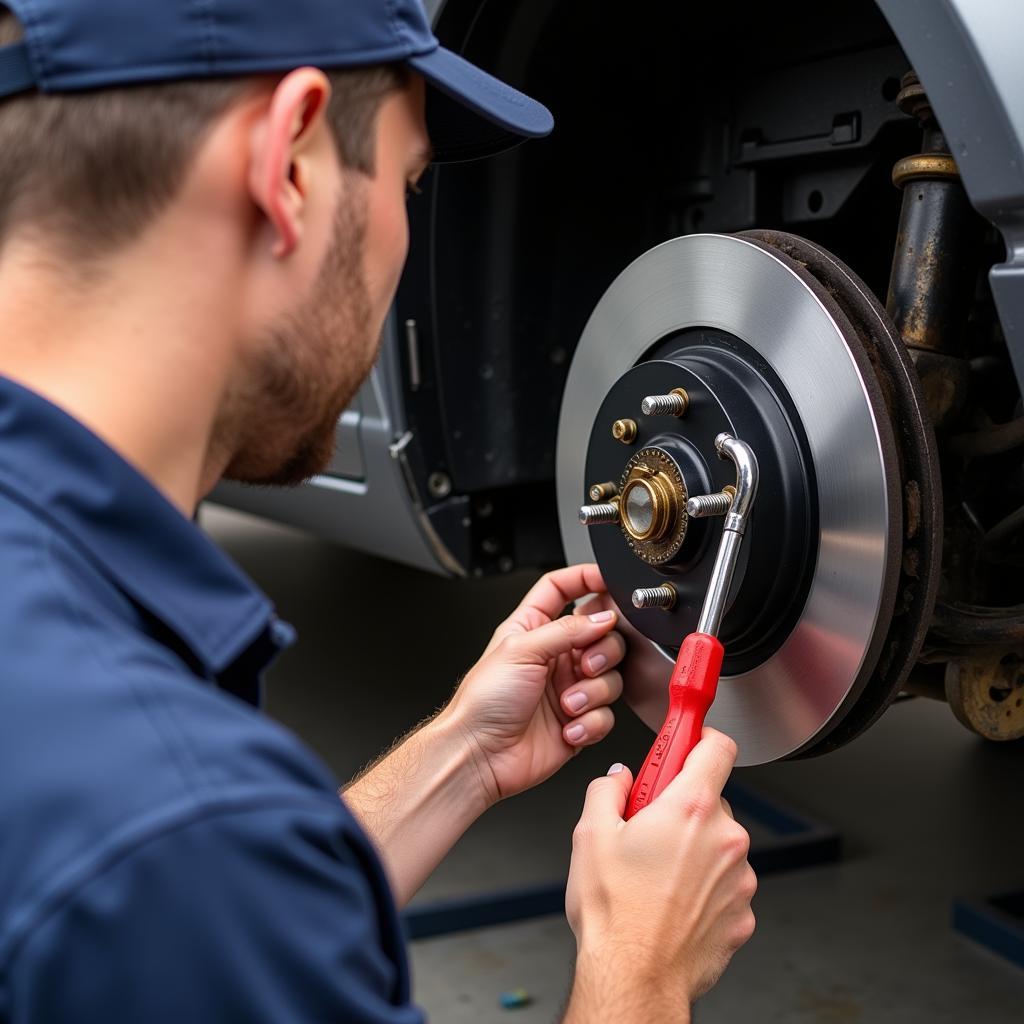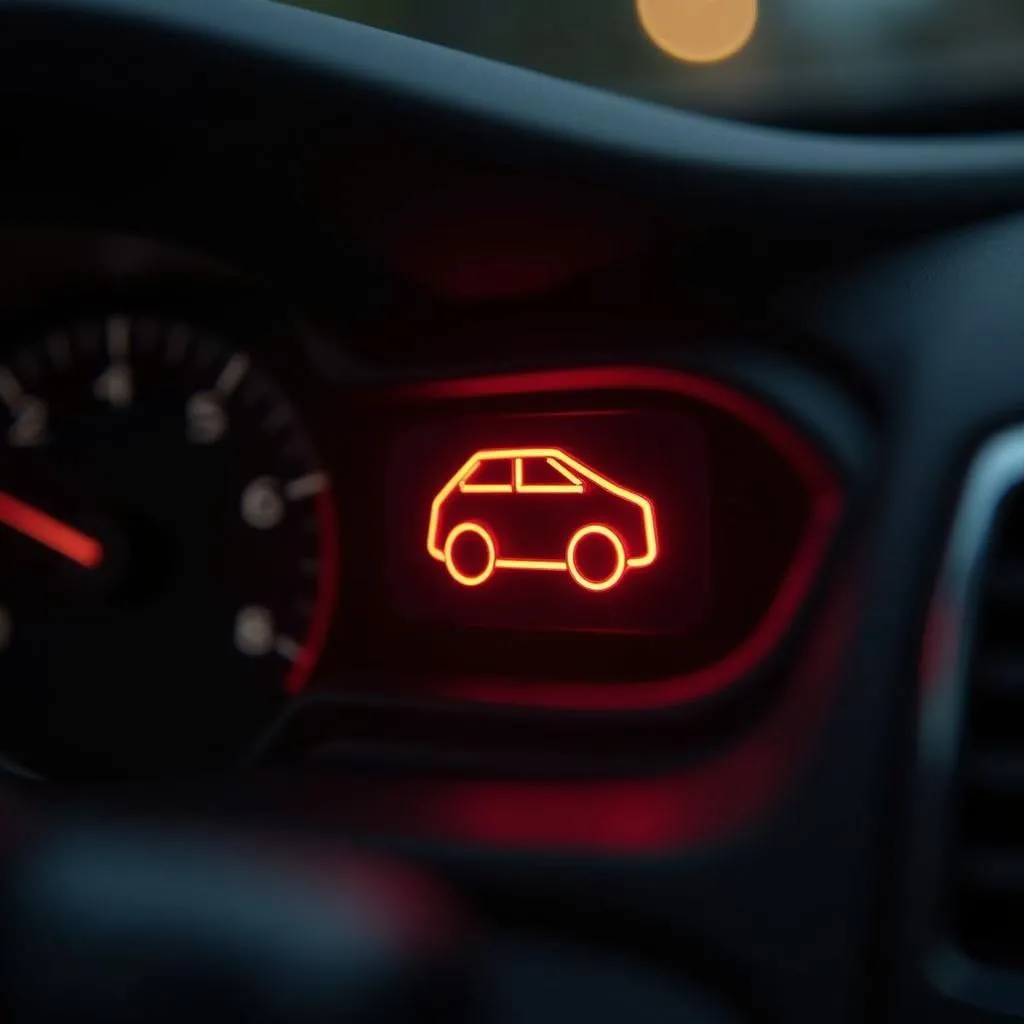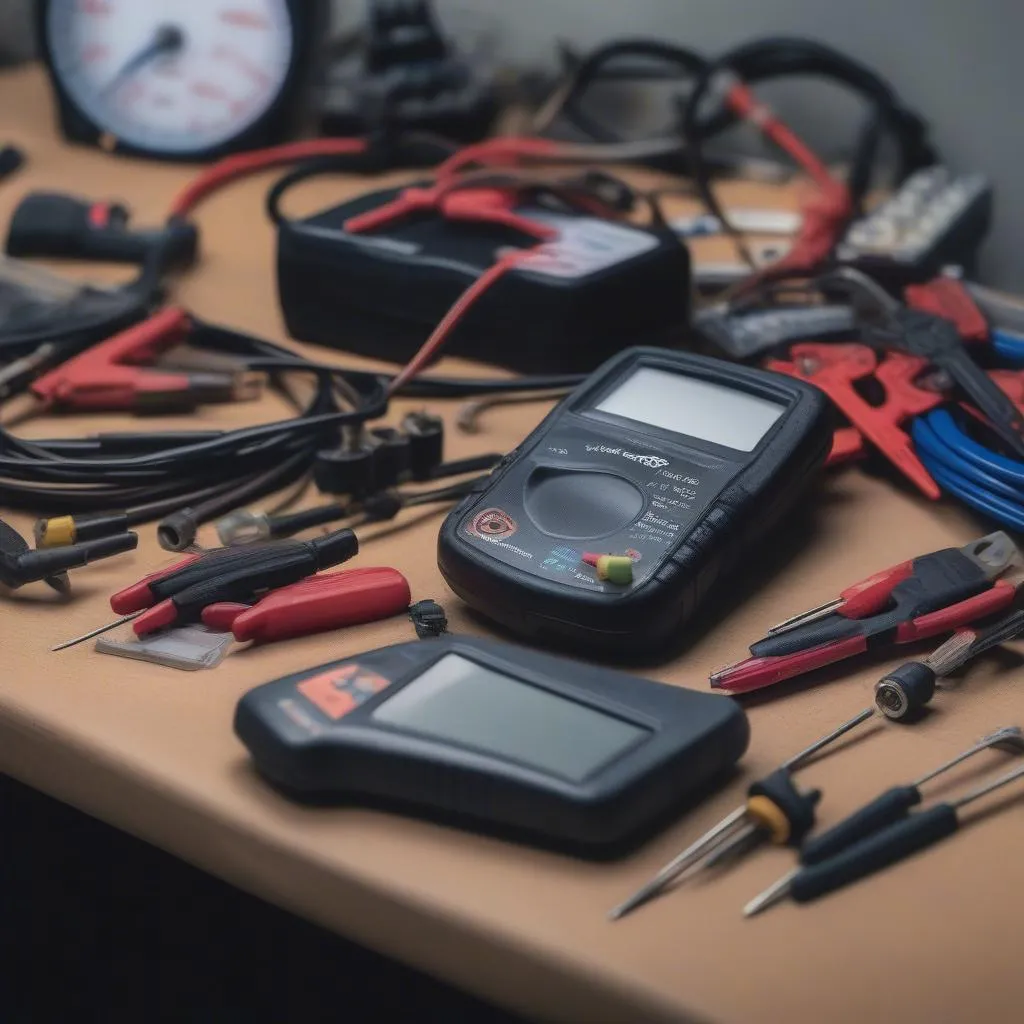A glowing brake warning light on your dashboard is a clear signal that something isn’t right with your braking system. While it might seem straightforward, this warning light can be triggered by more than just worn brake pads. Understanding the potential culprits behind this illuminated warning can be the key to addressing the issue effectively and ensuring your safety on the road.
Let’s delve into the two main switches that can activate the brake warning light and explore the common reasons behind their activation.
The Usual Suspect: The Brake Fluid Level Switch
The most frequent offender behind a lit brake warning light is the brake fluid level switch. This small but vital component is located in your brake fluid reservoir and acts as a vigilant guardian of your braking system’s hydraulic pressure.
How it Works:
- Monitoring Fluid Level: This switch continuously monitors the amount of brake fluid in the reservoir.
- Triggering the Warning: If the fluid level drops below a safe threshold, the switch springs into action, completing an electrical circuit that illuminates the brake warning light on your dashboard.
Why Does Brake Fluid Level Drop?
- Worn Brake Pads: As your brake pads wear down over time, the brake calipers need to push further to engage the rotors. This natural wear and tear process gradually consumes more brake fluid, potentially triggering the level switch.
- Brake Fluid Leaks: A leak anywhere within your braking system – be it a brake line, hose, caliper, or wheel cylinder – can lead to a drop in brake fluid level, setting off the warning light.
The Parking Brake Switch: An Often Overlooked Culprit
While less common than the brake fluid level switch, the parking brake switch can also be the reason behind an illuminated brake warning light. This switch serves a simple yet crucial role:
How it Works:
- Detecting Engagement: This switch is designed to detect when your parking brake, also known as the emergency brake, is engaged.
- Activating the Warning: When you pull up on the parking brake lever, this switch closes a circuit, illuminating the brake warning light on your dashboard. This serves as a visual reminder that your parking brake is engaged.
Common Issues:
- Malfunctioning Switch: Over time, the parking brake switch itself can wear out or become misaligned, leading to a false positive—the warning light illuminating even when the parking brake is disengaged.
- Sticking Parking Brake: If your parking brake cable is sticking or the mechanism itself is binding, it can prevent the parking brake from fully disengaging. This can lead to the switch remaining activated and the warning light staying on.
Diagnosing the Problem: Next Steps
Determining which switch is responsible for triggering your brake warning light requires a systematic approach:
-
Check Your Parking Brake: Start with the easiest check. Ensure your parking brake is fully disengaged. If the light remains on, you can rule out a simple parking brake issue.
-
Inspect Brake Fluid Level: With the parking brake ruled out, carefully open the brake fluid reservoir. If the fluid level is below the “MIN” mark, low brake fluid is likely the culprit.
-
Seek Professional Help: If you’re uncomfortable inspecting the brake fluid or the light remains on despite sufficient fluid, it’s crucial to seek professional help. A qualified mechanic can diagnose the issue accurately and perform any necessary repairs.
A Word of Caution from John Miller, Automotive Electrician:
“Never ignore a brake warning light. It’s a serious safety concern. Even if your brakes seem to be functioning normally, a drop in brake fluid or a faulty switch could lead to sudden brake failure in a critical situation.”
Addressing the Issue: Repair and Maintenance
 Brake System Inspection
Brake System Inspection
The repair strategy for a lit brake warning light hinges on the underlying cause.
-
Low Brake Fluid: If low brake fluid is the culprit, simply topping off the reservoir is not the solution. It’s essential to identify and address the root cause of the fluid loss, such as worn brake pads or leaks within the system.
-
Faulty Switches: A malfunctioning brake fluid level switch or parking brake switch will need to be replaced to restore proper functionality and extinguish the warning light.
Preventing Future Issues: Proactive Maintenance
Maintaining your vehicle’s braking system is paramount for safety and optimal performance. Here are some preventative measures:
- Regular Brake Inspections: Schedule routine brake inspections with a qualified mechanic. They can assess the condition of your brake pads, rotors, calipers, hoses, and fluid levels, catching potential issues before they escalate.
- Timely Brake Fluid Flush: Brake fluid is hygroscopic, meaning it absorbs moisture over time. This moisture contamination can compromise braking performance and corrode components. Follow your manufacturer’s recommended intervals for brake fluid flushes.
Remember, your vehicle’s braking system is your lifeline on the road. Addressing any warning lights promptly and adhering to a proactive maintenance schedule can go a long way in ensuring your safety and the well-being of your vehicle.


